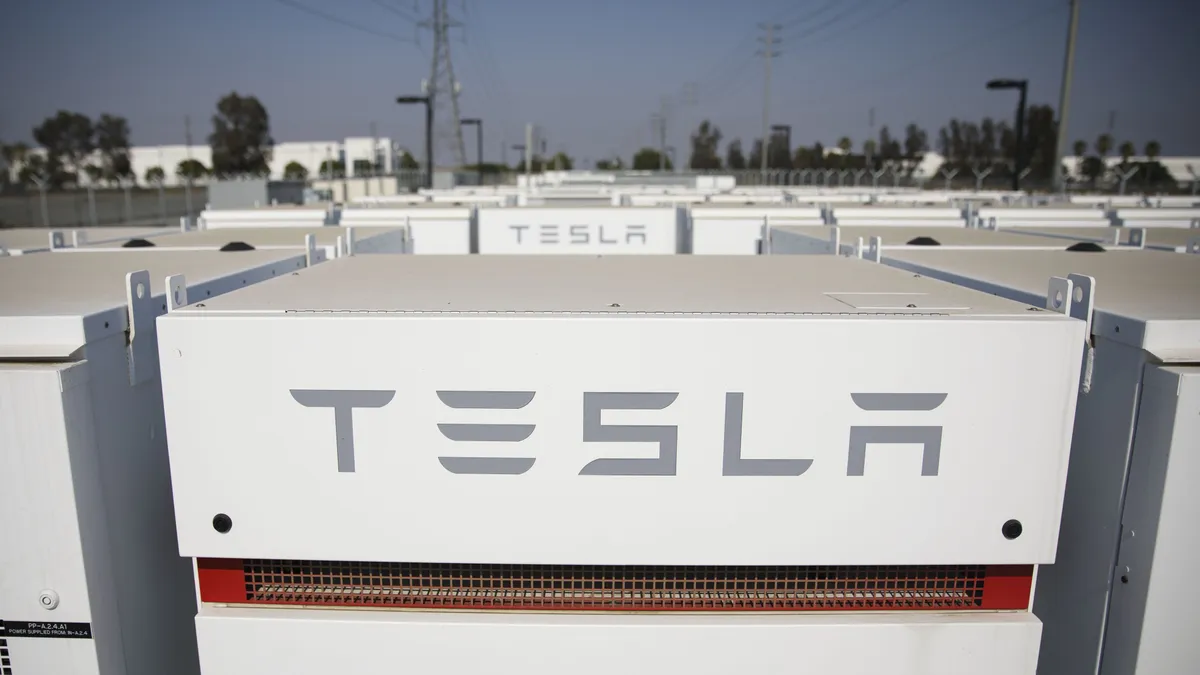Dive Brief:
-
The government of the state of South Australia has launched a program that will combine solar rooftop panels with Tesla Powerwall 2 batteries to create what it calls the world’s largest virtual power plant.
-
The plan calls for 50,000 houses to be fitted with 5 kW rooftop solar systems and 13.5 kWh Tesla batteries that in aggregate could deliver up to 250 MW of solar power and 650 MWh of energy storage. The state government is providing a $2 million grant and $30 million loan from its Renewable Technology Fund for the project and will seek additional funding from private investors.
-
The project was kicked off at 1,100 Housing Trust properties and will be followed by installations at another 24,000 Housing Trust properties, eventually extending to all households in South Australia over the next four years. Tesla’s South Australia project is slated for completion in June 2022.
Dive Insight:
Australia is trying to both combat greenhouse gas emissions and keep power prices under control. It is a tough battle, and in many cases, consumers have ended up on the losing end. That is particularly true in South Australia, which has some of the highest power prices in the world.
There are many causes, but the most frequent explanation is a hasty and poorly thought-out move from coal to renewable generation. Natural gas plants would usually be called on to fill the gap, but as gas companies exported the fuel to higher paying markets, gas prices began to rise, pushing up power prices.
South Australia was also filling the gap with wind power, but when the wind didn’t blow, the state last year had to initiate rolling blackouts.
In the wake of one of those blackouts, Tesla boasted that it could solve the state’s energy crisis in 100 days. South Australia took up Tesla’s offer, and last July named the company the winner of a solicitation to build a 100 MW, 129 MWh storage project at the 315 MW Hornsdale wind farm. In November 2017, Tesla completed the energy storage facility.
Tesla is now building on that success in a deal that the government of South Australia says promises to lower energy bills for participating households by 30%. Initially Tesla will provide batteries and solar panels for low-income housing estates. The project will then expand to include up to 50,000 households in the state.
The idea is that aggregating the individual solar and storage installations to create a virtual power plant (VPP) will inject cheaper power into the grid and help decrease power prices.
“We’re starting to see larger and larger VPP announcements, such as Sonnen and Mandaly's project announced in late 2017 which has about 3,000 systems,” Brett Simon, energy storage analyst at GTM Research, told Utility Dive. “Clearly, [the Tesla] project is well beyond the pilot stage.”
Those types of projects are “a boon to scaling the residential storage market, as they provide both scale and the opportunity for residential projects to earn revenue via grid services,” Simon said. That is particularly important, he said, given that a major hurdle for residential storage to date has been clearly monetizable value streams.
Creating opportunities to earn grid service revenues “further improves the economic case for residential storage and will increase financier confidence in residential deployments,” Simon said.














